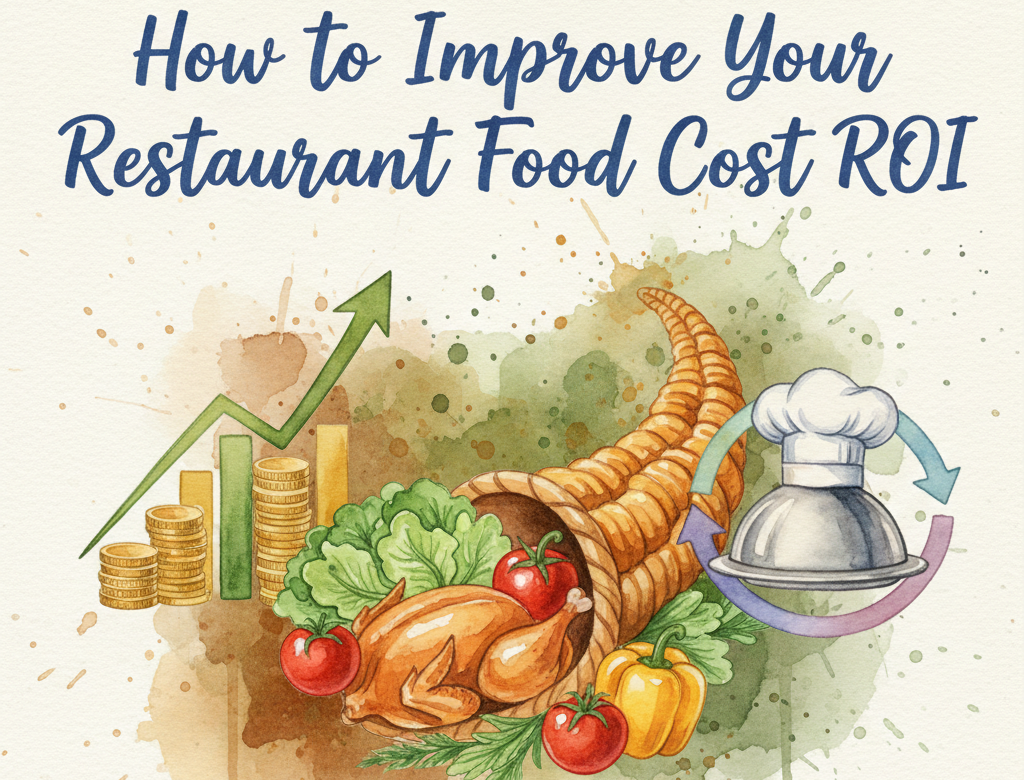Dealing with rising food costs in Malaysia is a significant challenge that requires strategic planning. Today we’ll delve into the current state of food inflation, identify which ingredients are becoming more expensive, and explore effective strategies to manage these rising costs within your establishment. One of the strategy that you will learn is how to use a restaurant POS system to deal with food inflation.
What is Food Inflation?
Food inflation refers to the rate at which the prices of food items increase over a specific period. It’s a critical indicator of the economic environment affecting both consumers and businesses. In Malaysia, the Ministry of Finance has projected that the consumer price index (CPI) may rise between 2% and 3.5% in 2025, potentially reaching the highest rate since 2017. This anticipated increase is attributed to factors such as subsidy rationalization and external economic shocks.
Factors Contributing to Food Inflation
Several key factors are driving the anticipated increase in food prices:
- Subsidy Rationalisation: The Malaysian government is considering adjustments to existing subsidies, including those for essential items like local white rice, sugar, and eggs. These changes aim to improve fiscal health but may lead to higher prices for these staples.
- Global Commodity Prices: Fluctuations in global markets, especially in commodities like palm oil, can significantly impact local food costs. For instance, Malaysian crude palm oil futures are expected to rise by 5.4% in 2025, averaging at 4,350 ringgit per metric ton, driven by increased demand from Indonesia’s biodiesel initiatives.
- Supply Chain Disruptions: Global events, such as pandemics or geopolitical tensions, can disrupt supply chains, leading to shortages and increased costs for imported goods. These disruptions can cause delays and additional expenses in sourcing ingredients.
- Climate Change: Adverse weather conditions can affect crop yields, leading to shortages and increased prices for certain food items. For example, prolonged droughts or floods can devastate agricultural production, reducing the availability of key ingredients.
Ingredients Experiencing Price Increases
Understanding which ingredients are becoming more expensive can help you make informed decisions about menu planning and sourcing. Recent data indicates the following trends:
- Vegetables: Prices surged by 6.2% in June 2024, up from 4.8% in May. This increase is attributed to supply chain disruptions and adverse weather conditions affecting crop yields.
- Cereals and Cereal Products: Experienced a 1.6% rise in June 2024, reflecting higher global grain prices and increased transportation costs.
- Oils and Fats: The price of palm oil, a common cooking ingredient, has seen significant increases due to rising global demand and production challenges.
- Meat and Poultry: Costs have risen due to higher feed prices and supply chain constraints, impacting dishes that rely heavily on these proteins.
How to Deal With Food Inflation?
To mitigate the impact of rising food costs, consider implementing the following strategies:
- Standardize Your Recipes
Consistency is crucial in managing food costs. By standardizing your recipes, you ensure that your staff uses the exact amount of each ingredient, preventing overuse and waste. This practice not only maintains the quality of your dishes but also helps in controlling expenses. Utilizing recipe management features can assist in setting precise measurements and instructions, ensuring uniformity across all preparations. - Optimize Inventory Management
Efficient inventory management prevents overstocking and reduces waste. By keeping accurate records of your stock levels, you can make informed purchasing decisions, ensuring that you buy only what is necessary and minimize spoilage. Implementing an inventory management system provides real-time updates, allowing you to track ingredient usage, monitor stock levels, and set alerts for reordering. This proactive approach helps in maintaining optimal inventory levels and reducing unnecessary expenditures. - Analyze Menu Performance
Regularly reviewing your menu to identify which dishes are popular and which are not can help you focus on items that contribute positively to your revenue. By understanding your customers’ preferences, you can adjust your menu offerings accordingly, reducing the need to purchase ingredients for less popular dishes. Sales analytics tools can provide insights into dish performance, helping you make data-driven decisions about menu design and ingredient procurement. - Implement Supplier Management
Building strong relationships with your suppliers can lead to better pricing and more consistent supply. By comparing prices and monitoring spending trends, you can negotiate more favorable terms and identify opportunities for cost savings. Supplier management software can assist in tracking vendor performance, managing contracts, and analyzing purchasing data, enabling you to make informed decisions about sourcing and procurement. - Reduce Food Waste
One of the most important thing to do is reduce food waste in your restaurant. Technology can help but you need to make sure you’re not lagging behind on the manual processes as well. These are some of the manual processes that you can ask your staff to do-
Accurate Forecasting: Use historical sales data to predict future demand and adjust your purchasing accordingly. This approach helps in aligning inventory levels with anticipated sales, reducing the likelihood of overstocking or stockouts.
Proper Storage: Ensure ingredients are stored correctly to extend their shelf life. Implementing proper storage techniques, such as maintaining appropriate temperatures and humidity levels, can prevent spoilage and maintain ingredient quality.
Creative Use of Ingredients: Repurpose surplus ingredients into daily specials or new dishes. This strategy not only reduces waste but also offers customers variety and showcases your culinary creativity.
Portion Control: Train staff to serve consistent portion sizes to reduce waste. Utilizing portion control tools and providing clear guidelines can help in maintaining consistency and managing food costs.
Regular Inventory Audits: Conduct routine checks to identify and use items nearing their expiration dates. Regular audits help prevent spoilage and ensure that older stock is utilized before newer inventory.
Managing rising food costs in Malaysia requires a smart approach that combines strategic planning, efficient operations, and the effective use of technology. By standardizing recipes, optimizing inventory management, analyzing menu performance, implementing supplier management, and reducing food waste, you can mitigate the impact of food inflation on your business. If you don’t know about the basics of inflation and how they are affecting your restaurant then go and checkout the mentioned blog above. Once you understand more about inflation you should use EasyEat. Which can further enhance your ability to navigate these challenges, ensuring the continued success and profitability of your establishment.




